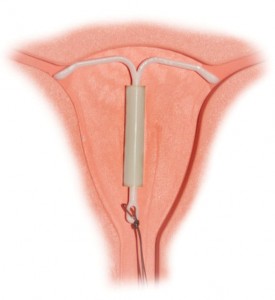Do women using the Mirena hormonal IUD have their period?
Does it suppress the hormone cycle for all women or just some?
How does it work to prevent pregnancy exactly?
It seems these questions can’t be answered even by the assumed experts. We are told the Mirena “partially” suppresses ovulation and that some women will bleed and some won’t bleed at all. Mostly we hear that the impact must be limited to the reproductive organs because the level of synthetic hormone used is so low.
In an article entitled ‘Mirena: The Other Side of the Story’, AAA Ewies, a consultant gynaecologist at a UK NHS hospital wrote, “The argument used that serum concentration of LNG is extremely low and that its influence on ovarian function is limited has been disputed recently by many investigators. Xiao et al. found that Mirena was associated with substantial systemic absorption of the synthetic progesterone and recorded levels equivalent to two synthetic progesterone-containing ‘minipills’ taken daily on a continuous basis. A study documented that 21% of Mirena users experienced progestogenic adverse effects. Wahab and Al-Azzawi reported that Mirena suppresses oestrogen production, inducing a clinical situation similar to a premature menopause in at least 50% of treated women”.
In an effort to cut through the confusion, Bayer Pharmaceuticals went ahead and released the Skyla hormonal IUD in February of this year. Skyla is smaller than the Mirena, lasts three instead of five years, but contains the same synthetic progesterone and is also 99% effective at preventing pregnancy.
It was interesting timing, considering the American Congress of Obstetricians and Gynecologists (ACOG) almost simultaneously released a recommendation that doctors provide the IUD (it didn’t specify if they meant the hormonal or copper device in the statement) as “first-line contraceptive options for sexually active adolescents”. Teens often struggle with heavier or painful periods and are far more likely to be offered the Skyla, which is said to lighten bleeding, than the Paragard copper IUD, which is thought to increase bleeding. Not to mention the Skyla costs significantly more, has a shorter span of use, and is backed by a Bayer’s marketing department. The Mirena has been advertised heavily since its release in 2001 and the aggressiveness of the campaign – with television commercials proclaiming Mirena would make a woman “look and feel great” – was reprimanded by the FDA.
As a consequence of this combination of the ACOG recommendation and the release of Skyla we have seen articles in recent weeks with headlines such as ‘Could New Skyla Contraception Help Women Reach For The Stars’ and yet more that worry over the lack of knowledge that is preventing doctors from providing the IUD to young women or preventing young women from asking for an IUD. There was a time when IUDs were only given to women who had already had children – in part because of concerns regarding the devices causing damage that led to infertility. The tone is always the same – why are they keeping this near-perfect sounding birth control choice from us? If it is an undercover marketing technique to get women riled up about their access to hormonal IUDs then that department of Bayer deserves a raise.
Some of the doctors may have not received the memo but others may be concerned about the mounting lawsuits regarding the serious physical side effects of the Mirena, or at least they should be. The production of Skyla appears to be a deliberate effort by Bayer to reach the teens and twenty-somethings market. Even Bitch magazine got in on the advertorial action last week linking through their website to a suspicious looking post that seemed much like a marketing placement. Most of the media coverage does not flag the difference between the hormonal IUD and the copper, blithely using the term “IUD” in the same way the phrase “birth control” is now synonymous with “hormonal birth control.”
Professor at the University of California at Riverside Chikako Takeshita outlines in her book, The Global Biopolitics of the IUD, the history of the IUD, from its coercive use in developing countries to its presentation as a convenient method for the modern woman in the US and Europe. “The ACOG recommendation and release of Skyla is clearly going to expand the market for these devices”, she states, “This normalizes the use of long-acting contraceptives. Such normalization makes the use of the devices a technological imperative. The idea is that if a solution, a technological fix, to the problem of unintended pregnancy exists then you must take it. It silences other ways to approach the problem. The IUD doesn’t fix the fundamental issue which is the lack of sex education for teenagers”.
Rather than seizing the ACOG recommendation as simply a victory in the war against the teen pregnancy “epidemic” we must look critically at the potential result. This may seem like the easy answer, but is it the right one?



Holly,
A very important and thoughtful article. However, when I tried to get the link to the AAA Ewies article it said “Forbidden”!
I’m in the process of updating information on the CeMCOR website about contraceptive choices and would like to read all of the articles to which you referred. Could you send me the PDFs or the full citations, please? Thank you, Jerilynn
Thanks Dr Prior. Here’s that link…not sure why it won’t work here, maybe because it’s a PDF:
https://onlinelibrary.wiley.com/store/10.1111/j.1471-0528.2007.01439.x/asset/j.1471-0528.2007.01439.x.pdf?v=1&t=hhjbfy6d&s=1c960df641eee7ee2b4e3987a1af8eacabe3b578
At the end the other studies are cited.
Ahaa, its good conversation concerning this paragraph here at
this website, I have read all that, so at this time me also commenting here.